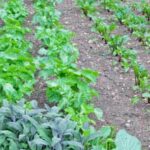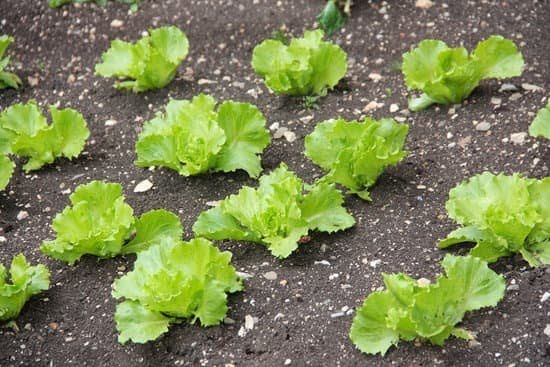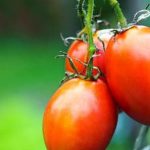Container vegetable gardening offers a variety of benefits that make it an attractive option for both urban and suburban dwellers. With its convenience, space-saving capabilities, and accessibility, this type of gardening is gaining popularity among individuals who are looking to grow their own fresh produce without the need for a large backyard or extensive gardening knowledge.
In this article, we will explore the advantages of container vegetable gardening and provide valuable tips to help you get started on your own thriving container garden. Whether you have a small balcony, a sunny windowsill, or limited outdoor space, container gardening allows you to enjoy the joys of growing your own vegetables right at home.
One of the main advantages of container vegetable gardening is its convenience. By planting vegetables in containers, you have the freedom to position them wherever it suits you best – whether it’s by a kitchen window for easy access while cooking or on a patio for aesthetic appeal. This flexibility allows you to create a personalized garden that integrates seamlessly into your lifestyle.
Another benefit of container gardening is its space-saving nature. Regardless of how much or how little outdoor space you have available, containers can be arranged in compact arrangements to maximize efficiency and utilize every inch effectively. They also allow for vertical gardening options such as hanging baskets, window boxes, or trellises, thereby making use of unused vertical space.
Furthermore, container vegetable gardening provides accessibility for those with physical limitations or restricted mobility. With raised containers placed at an appropriate height, individuals can tend to their plants without heavy bending or kneeling. Not only does this make gardening more accessible to everyone, but it also promotes inclusivity and enables people with limited mobility to experience the joys and benefits of growing their own food.
In the following sections of this article, we will delve deeper into topics such as choosing the right containers for your vegetables, essential tools and supplies needed for success in container gardening, selecting suitable vegetables for containers, proper placement based on sunlight requirements, soil and watering techniques, fertilizing and pruning tips, troubleshooting common challenges, as well as harvesting and enjoying the fruits of your labor.
By embracing container vegetable gardening and following the tips provided in this article, you can embark on a rewarding journey of growing your own fresh and nutritious vegetables right at home. So let’s get started and explore the wonderful world of container gardening.
Getting Started
Choosing the right containers for your vegetables is an essential step in getting started with container vegetable gardening. The container you choose will play a crucial role in the growth and overall health of your plants. Here are some tips to help you make the best choice:
- Types of Containers: There are various types of containers available for growing vegetables, including pots, troughs, hanging baskets, and window boxes. Consider the space you have available and the aesthetics you want to achieve when selecting your containers.
- Size and Material: The size of your container will depend on the type of vegetable you plan to grow. Larger vegetables like tomatoes will require bigger containers, while smaller varieties like herbs can thrive in smaller pots. It’s important to choose materials that are durable and provide adequate insulation for the roots. Materials such as ceramic, plastic, or fabric containers are commonly used in container gardening.
- Drainage: Proper drainage is crucial for preventing waterlogged soil and root rot. Look for containers with drainage holes at the bottom or consider adding a layer of rocks or gravel before adding soil to improve drainage.
In addition to choosing the right containers, it’s essential to consider the specific needs of each vegetable variety when selecting your containers. Some vegetables may require deeper pots due to their extensive root systems, while others may do well in shallow window boxes. Take into account factors such as sunlight requirements and space limitations when deciding on container sizes and shapes.
By following these tips, you can ensure that you choose the right containers for your vegetables, setting them up for success in your container garden.
Essential Tools and Supplies for Successful Container Gardening
Must-Have Tools for Container Gardening
When starting a container vegetable garden, having the right tools is essential for success. Here are some must-have tools that will make your gardening experience easier and more efficient:
- Potting Mix: Use a high-quality potting mix specifically formulated for container gardening. Avoid using regular garden soil, as it may not provide adequate drainage and can introduce pests and diseases.
- Fertilizer: Containers require regular feeding since nutrients can leach out with frequent watering. Choose a slow-release organic fertilizer or liquid fertilizer to ensure your plants receive the necessary nutrients for healthy growth.
- Watering Can or Hose with Nozzle: Proper watering is crucial in container gardening. A watering can with a fine rose or a hose with an adjustable nozzle allows you to control the water flow and avoid overwatering or causing damage to delicate seedlings.
- Trowel or Hand Shovel: A trowel is indispensable for transplanting seedlings into containers, removing weeds, and loosening soil when needed. Look for a sturdy trowel made of stainless steel or aluminum, which will stand up well to ongoing use.
- Labels or Markers: Keep track of what you’ve planted by using labels or markers in your containers. This will help you differentiate between different vegetable varieties and keep organization in your garden.
Additional Supplies for Successful Container Gardening
In addition to the essential tools mentioned above, there are several supplies that can further enhance the success of your container vegetable garden:
- Saucers or Trays: Use saucers or trays under your containers to collect excess water and prevent staining on decks, patios, or windowsills.
- Support Structures: Some vegetables, such as tomatoes and pole beans, require support as they grow vertically. Bamboo stakes, cages, trellises, or tomato cages can provide the necessary support for these plants, keeping them upright and preventing breakage.
- Pest Control Measures: Container gardens are not immune to pests, so it is important to be proactive in pest control. Consider using organic pest control methods such as insecticidal soap, neem oil, or companion planting techniques to deter common garden pests.
- Pruning Tools: Depending on the plants you choose for your container garden, pruning may be necessary for shaping, removing dead or diseased foliage, and promoting healthier growth. Invest in a pair of good quality pruning shears or scissors for this purpose.
By having these essential tools and supplies on hand, you will be well-equipped to create a thriving container vegetable garden. Remember that investing in quality tools and supplies upfront can save you time and effort in the long run while contributing to the success of your gardening endeavors.
Selecting the Perfect Vegetables for Container Gardening
Factors to Consider
When selecting vegetables for your container garden, it’s essential to consider the specific needs and characteristics of each plant. Here are some factors to keep in mind:
- Size: Choose varieties that are suitable for compact spaces. Look for dwarf or bush varieties rather than those that grow tall or spread out extensively.
- Root Depth: Consider the depth of the root system when selecting vegetables for containers. Some vegetables have shallow roots, while others require deeper containers to accommodate their roots properly.
- Sunlight Requirements: Different vegetables have varying sunlight requirements. Some thrive in full sun, while others prefer partial shade. Be sure to choose plants that will receive the appropriate amount of sunlight based on your garden’s location.
Popular Container-Friendly Vegetables
Here are some vegetable options that are known to do well in containers:
- Tomatoes: Many tomato varieties, such as cherry tomatoes and determinate types, adapt well to container gardening. Choose compact varieties and provide proper support for their stems.
- Peppers: Both sweet and hot peppers can be successfully grown in containers. Look for compact or dwarf varieties that fit well within limited spaces.
- Leafy Greens and Herbs: Lettuce, spinach, kale, and various herbs like basil, parsley, and chives are excellent choices for container gardening. They don’t take up much space and offer a continuous harvest throughout the growing season.
- Carrots: There is a wide range of carrot varieties specifically bred for container gardening which produce shorter roots ideal for small-scale cultivation.
Remember that these suggestions are just a starting point; there are many more vegetable options available depending on your personal preferences and regional climate conditions.
Setting Up Your Container Garden
When it comes to setting up your container garden, proper placement and sunlight are crucial factors that directly impact the growth and productivity of your vegetable plants. Choosing the right location for your containers ensures that your plants receive the optimal amount of sunlight they need to thrive. In this section, we will provide you with valuable tips on finding suitable placements for your containers based on sunlight availability and the preferences of different vegetable varieties.
- Assess Sunlight Availability: Before placing your containers, it is essential to evaluate the amount of sunlight your chosen spot receives throughout the day. Most vegetables require at least 6-8 hours of direct sunlight daily for vigorous growth. Observe the area at different times of day to determine if it gets enough sunlight or if there are areas that are too shady.
- Consider Vegetable Variety: Different vegetables have varying sunlight requirements. Some thrive in full sun, while others can tolerate partial shade. As you select vegetable varieties for your container garden, be mindful of their light preferences. Leafy greens like lettuce and spinach can often handle some shade, while tomatoes, peppers, and other fruiting vegetables typically need full sun exposure.
- Rotate Containers: If you have a limited space where direct sunlight is available, consider rotating your containers throughout the day to ensure all plants receive adequate light. This can be particularly helpful if you have a mix of sun-loving and shade-tolerant vegetables in your container garden.
- Sheltered vs. Exposed Areas: While direct sunlight is important for most vegetables, intense heat during certain parts of the day might not be ideal for all varieties. If you live in a hot climate or have scorching summer temperatures, consider placing containers in areas that offer some protection from afternoon sun or using shade cloth to prevent leaf burn.
Proper placement is key to maximizing plant growth and yield in container gardening. By providing sufficient sunlight for your vegetables, you’ll be well on your way to a thriving and productive container garden. In the next section, we will discuss soil and watering techniques to help you further optimize your vegetable plants’ growing conditions.
| Vegetable | Sunlight Requirements |
|---|---|
| Tomatoes | Full Sun (6-8 hours) |
| Peppers | Full Sun (6-8 hours) |
| Lettuce | Partial Shade (3-4 hours) |
| Herbs (Basil, Parsley, etc.) | Varying Requirements – Check individual plant labels |
Soil and Watering Techniques for Container Vegetable Gardening
Container vegetable gardening offers a range of benefits, including convenience, space-saving, and accessibility. However, to ensure successful growth and yield, it is essential to pay close attention to soil and watering techniques. This section will guide you through the importance of using high-quality potting mix, incorporating organic matter, and mastering proper watering techniques for your container vegetable garden.
The quality of the soil used in container gardening is critical for providing the necessary nutrients and support for plant growth. It is recommended to use a good-quality potting mix specifically designed for containers. Potting mixes are lightweight and well-draining, allowing roots to access oxygen while retaining moisture.
To further enhance soil quality, consider adding organic matter such as compost or well-rotted manure before planting. Organic matter improves water retention capabilities and adds essential nutrients to the soil over time. Mixing in organic matter also enhances the overall structure of the soil, promoting healthy root development.
Proper watering techniques are crucial for container vegetables since they have limited access to water compared to traditional garden beds. The frequency of watering depends on various factors like the size of the container, type of plants grown, weather conditions, and drainage properties of the potting mix.
When watering your container plants, ensure thorough saturation by allowing water to flow out from drainage holes at the bottom of the containers. This flushing action helps prevent salt build-up in the soil that can harm plant roots. It is important not to let containers sit in standing water as this can lead to root rot.
Using self-watering containers can be an excellent solution for maintaining consistent moisture levels in your vegetable garden. These containers feature built-in reservoirs that gradually release water as needed by the plants. They help reduce the risk of overwatering or under-watering and provide a buffer against drying out during hot weather or when you’re away from home.
| Soil Techniques | Watering Techniques |
|---|---|
| – Use high-quality potting mix designed for containers | – Water thoroughly until water drains from drainage holes |
| – Add organic matter such as compost or well-rotted manure | – Avoid letting containers sit in standing water |
| – Improves soil structure, drainage, and nutrient content | – Consider using self-watering containers for consistent moisture |
Nurturing Your Container Vegetables
Fertilizing:
Fertilizing is a crucial step in container vegetable gardening as it provides the necessary nutrients for healthy plant growth and maximum yield. Here are some tips to help you fertilize your container vegetables effectively:
- Choose the right fertilizer: Look for organic fertilizers specifically formulated for vegetables. These fertilizers contain essential nutrients like nitrogen, phosphorus, and potassium (NPK) that promote healthy plant development.
- Follow a schedule: Create a fertilization schedule based on the specific needs of your vegetables. Generally, it is recommended to fertilize every 4-6 weeks during the growing season.
- Apply according to instructions: Carefully read the product label for dosage and application instructions. Over-fertilization can lead to nutrient burn and harm your plants.
- Consider liquid or slow-release fertilizers: Liquid fertilizers provide quick nutrient uptake, while slow-release fertilizers release nutrients gradually over time. Both options can be effective in container gardening, depending on your preferences and plant requirements.
Pruning:
Pruning plays a significant role in maintaining the health and productivity of your container vegetables. By removing excess foliage and maintaining proper airflow, pruning can prevent diseases, improve sunlight penetration, increase fruiting, and ensure overall plant vigor. Follow these guidelines when pruning your container vegetables:
- Identify overcrowded areas: Inspect your plants regularly to identify areas where branches or leaves are densely packed together. These crowded areas create a favorable environment for disease development and limit sunlight exposure.
- Remove diseased or damaged parts: If you notice any signs of disease or damage on your plants, promptly prune away affected parts to prevent further spread.
- Promote branching: Pinch or prune the top part of your plants to encourage lateral branching. This helps create a bushier and more compact growth habit, which is beneficial for container gardening.
- Monitor size and shape: Regularly assess the size and shape of your plants. If they start outgrowing their containers or becoming lopsided, consider pruning them back to maintain a manageable size and aesthetic appeal.
By fertilizing and pruning your container vegetables properly, you can ensure optimal growth, health, and productivity throughout the growing season. Remember to monitor your plants closely, make adjustments as needed, and enjoy the abundant harvest from your container vegetable garden.
Troubleshooting Common Container Vegetable Gardening Challenges
Growing vegetables in containers comes with its own set of challenges, but with the right knowledge and techniques, you can overcome them and ensure a successful container vegetable garden. In this section, we will address some common issues that you may encounter and provide solutions to help you troubleshoot and maintain the health of your plants.
One of the most common challenges in container gardening is dealing with pests. Common pests like aphids, snails, slugs, and caterpillars can wreak havoc on your vegetable plants. To combat these pests, regularly inspect your plants for any signs of damage or infestation. You can remove them manually or use natural pest control methods such as introducing beneficial insects like ladybugs or using organic insecticidal soaps.
Another challenge is diseases that can affect your container vegetables. Plants grown in containers are more susceptible to certain diseases such as fungal infections due to limited air circulation and high humidity. To prevent these diseases, it’s important to practice good sanitation by cleaning up fallen leaves or debris promptly and avoiding overwatering. If a plant does get infected, remove the affected parts immediately and treat it with appropriate organic fungicides if necessary.
Nutrient deficiencies can also occur in container gardens. Since nutrients in potting mix become depleted over time, regular fertilization is crucial for healthy plant growth. Organic fertilizers that are specifically formulated for vegetables are recommended as they provide essential nutrients without harmful chemicals. It’s important to follow the recommended fertilization schedule and avoid over-fertilizing which can lead to nutrient burn or other issues.
Overwatering is another challenge that many gardeners face when growing vegetables in containers. Containers may not have proper drainage, leading to waterlogged roots and rot. To prevent this issue, ensure that your containers have drainage holes at the bottom and use well-draining potting mix. Water consistently but allow the top inch of soil to dry out between watering to prevent overwatering.
By addressing these common challenges, you can ensure a healthier and more productive container vegetable garden. Remember to keep a close eye on your plants, practice good sanitation and pest control methods, provide proper nutrition, and avoid overwatering. With patience and diligence, you’ll be able to troubleshoot any issues that arise and enjoy a bountiful harvest of delicious homegrown vegetables.
Harvesting and Enjoying the Fruits of Your Container Vegetables
After putting in the time and effort to grow your vegetables in containers, it’s finally time to harvest and enjoy the fruits of your labor. Harvesting your container vegetables at the right time ensures that you’ll get the best flavor and nutritional value from each plant. Here are some tips for harvesting and enjoying your container vegetables:
- Knowing when to harvest: Different vegetables have different indicators of ripeness. For example, tomatoes should be harvested when they are fully red and firm, while lettuce can be harvested as soon as the leaves are big enough to eat. Consult seed packets or gardening resources for specific guidance on each vegetable variety.
- Harvesting techniques: Use sharp garden shears or a small knife to harvest your container vegetables. It’s important to cut rather than pull the vegetables off the plants to avoid damaging the roots or stems. Be gentle when handling delicate herbs and greens.
- Enjoying your harvest: There’s nothing quite like the taste of homegrown vegetables. Once harvested, wash your vegetables thoroughly before using them in recipes or eating them raw. The freshness and flavor of newly harvested vegetables will enhance any dish you prepare.
- Storing excess produce: If you find yourself with more vegetables than you can consume immediately, there are several ways to store them for later use. Some vegetables, like carrots and radishes, can be stored in a cool, dark place for several weeks. Others, such as tomatoes and peppers, can be chopped or sliced and frozen for future use.
By following these tips for harvesting and enjoying your container vegetables, you’ll be able to savor the taste of freshly picked produce right from your own garden. Whether you choose to whip up a delicious salad or incorporate homegrown veggies into your favorite recipes, the rewards of container vegetable gardening extend beyond just growing – they also include savoring the flavors of your hard work.
Conclusion
In conclusion, container vegetable gardening is a highly rewarding and enjoyable endeavor that brings numerous benefits. Throughout this article, we have explored the advantages of growing vegetables in containers, the essential tools and supplies needed for success, and the steps to set up and maintain a thriving container garden. By following these tips and suggestions, anyone can experience the joys of cultivating their own fresh and nutritious vegetables.
One of the greatest joys of container vegetable gardening is the convenience it offers. Whether you live in an urban apartment or a suburban home with limited yard space, containers allow you to grow vegetables anywhere.
They are compact and portable, giving you the flexibility to move them around based on sunlight availability or changes in your outdoor environment. With container gardening, there’s no need for extensive land preparation or digging – simply choose your containers, fill them with soil, and start planting.
Furthermore, container vegetable gardening provides accessibility for individuals of all ages and physical abilities. The raised height of containers allows for easy access to plants without bending or kneeling, making it ideal for those with mobility limitations. Additionally, container gardening can be adapted to accommodate wheelchair users by placing containers at appropriate heights. This inclusivity makes it possible for everyone to enjoy the therapeutic benefits of tending to their own little piece of nature.
Frequently Asked Questions
How do you make a successful container vegetable garden?
To make a successful container vegetable garden, there are a few key factors to consider. First, choose the right container size and material. Ensure that it has proper drainage holes and is large enough for the size of plants you want to grow. Next, choose a suitable location that receives adequate sunlight for your chosen vegetables.
Provide regular watering to keep the soil moist but not waterlogged, as containers tend to dry out faster than in-ground gardens. Use high-quality potting soil mixed with compost or organic matter for optimal plant growth and nutrition. Select vegetable varieties that are well-suited for container gardening and pay attention to spacing requirements to avoid overcrowding. Lastly, regularly monitor for pests and diseases and take appropriate measures such as using organic pest control methods or removing affected plants promptly.
What vegetables grow well together in a container?
When it comes to choosing vegetables that grow well together in a container, it’s important to consider their compatibility in terms of growth habits, sunlight requirements, nutrient needs, and space occupancy. Some good companions include combinations like tomatoes with basil or marigolds; kale with lettuce or Swiss chard; peppers with onions or herbs like parsley; radishes with spinach or carrots; cucumbers with beans or dill; and zucchini with nasturtiums or thyme.
These combinations provide mutual benefits such as pest resistance, enhanced flavors, complementary nutrient uptake, natural shading between plants, and overall aesthetic appeal.
What do you put in the bottom of a vegetable garden container?
The bottom of a vegetable garden container requires some considerations for proper drainage and root health of the plants. One common practice is to add an inch or two of small stones or gravel at the bottom layer to help improve drainage. This helps prevent water from excessively pooling at the roots, which can lead to rot or other issues. However, it’s essential not to create too thick a layer as it may impede drainage altogether.
Above the stone layer, use landscape fabric or mesh screen cut-to-size to cover the drainage holes to prevent soil from escaping. Then, fill the container with a high-quality potting mix enriched with organic matter like compost or well-rotted manure. This combination creates a nourishing and well-draining environment for the plants to thrive in.

If you’re looking to get into vegetable gardening, or are just looking for some tips on how to make your current garden better, then you’ve come to the right place! My name is Ethel and I have been gardening for years. In this blog, I’m going to share with you some of my best tips on how to create a successful vegetable garden.





